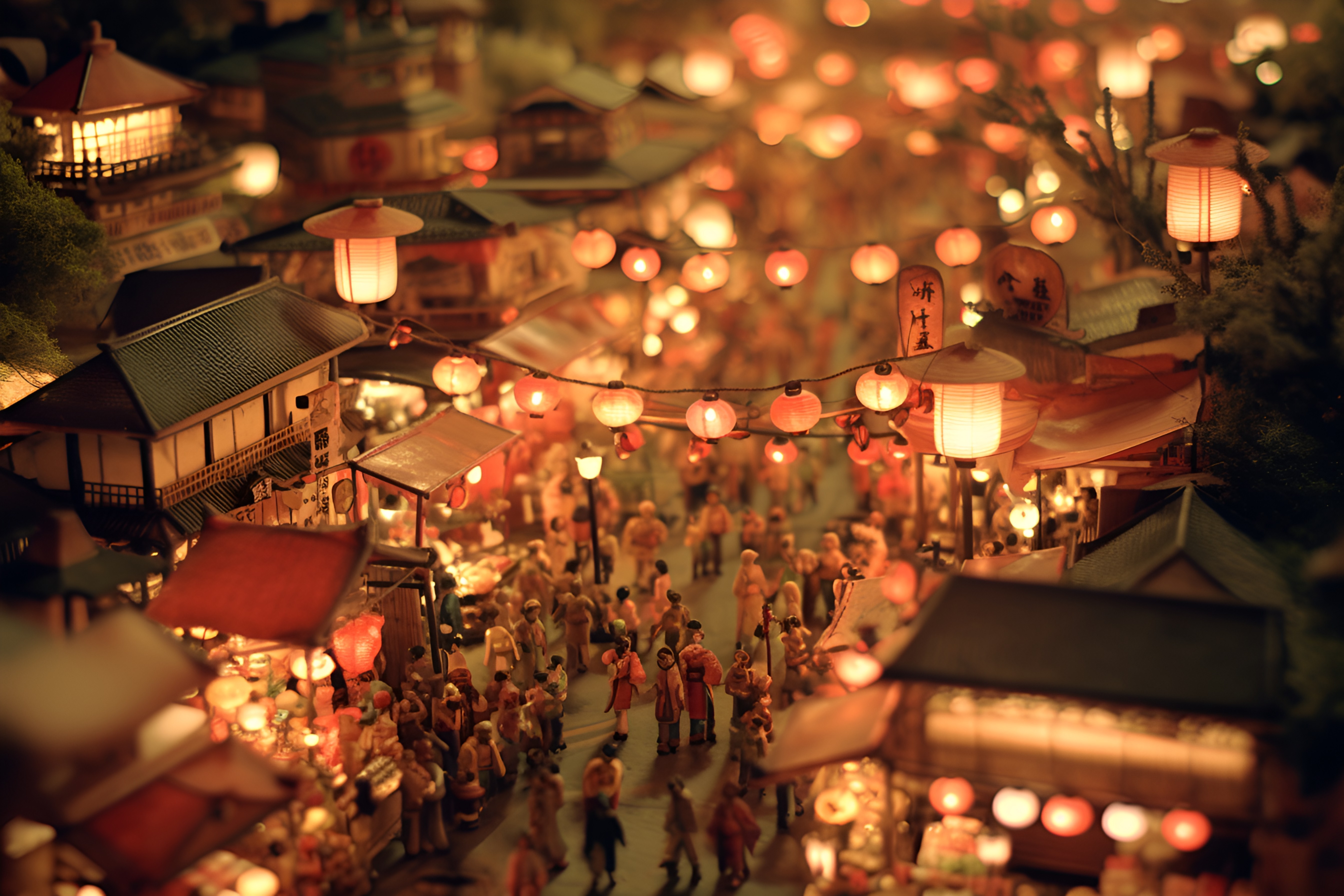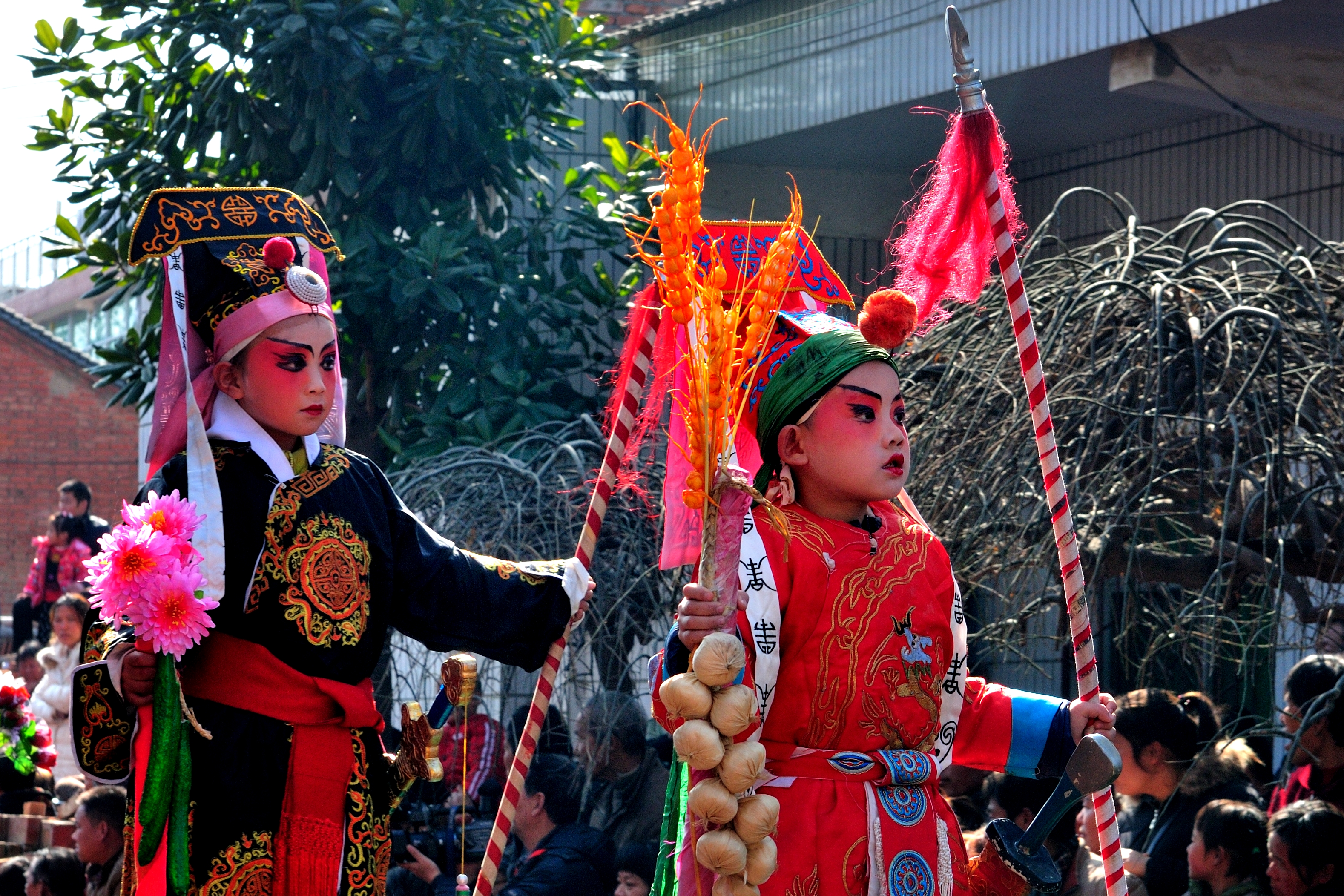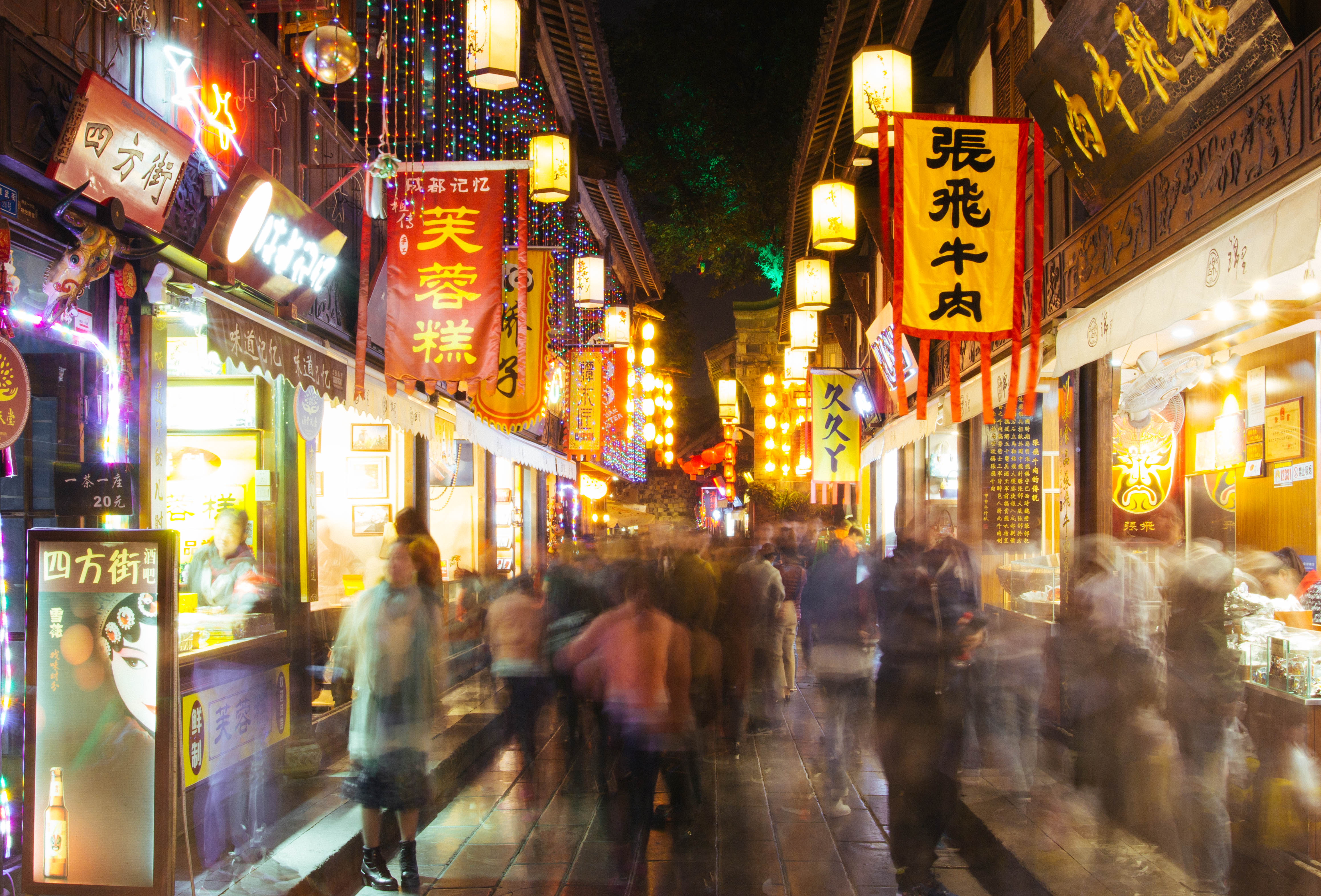Welcome to gochengdu.cn!
You need to accept our privacy and cookie policy to continue to browse our website. You can change your cookie settings through your browser.

In the Qing Dynasty (1644-1911) of China, every Lunar New Year in Chengdu was a time of unparalleled festivity, with different customs celebrated daily. These customs unfurled like a vividly colored scroll, captivating all who experienced them. Among them, some traditions have quietly faded away in the river of history, such as “Honoring the Deity of Happiness,” “Setting out Lamps for Blessings,” and “Prolonging Chinese New Year Celebrations.” These bygone customs, like ancient melodies that linger in the air, remain enchanting despite the passage of time.

Honoring the Deity of Happiness
Honoring the Deity of Happiness was an important New Year custom back in the Qing Dynasty in Chengdu. Legend has it that the Deity of Happiness was originally a devout maiden devoted to the deities of The Big Dipper and later came to be regarded as a guardian of marriage and happiness. The practice of Honoring the Deity of Happiness has a long history. In ancient times, the deity’s position was calculated daily based on the celestial stems, earthly branches, and the Bagua (literally, eight trigrams). Since the direction changed each day, the location for honoring the deity also varied.
At that time, the imperial court conducted grand rituals for this tradition, while the public focused on prayers for blessings. In Chengdu, the custom flourished as early as the Song Dynasty (960-1279). People would consult almanacs to determine the deity’s location, then travel in groups afterward to the Wuhou Shrine to pay homage and pray for peace and prosperity in the coming year.
Today, the Deity of Happiness stone tablet within the Wuhou Shrine serves as a testament to this tradition. Residents touch the stone during the 15-day Chinese New Year to pray for good fortune in the year ahead. From the ancient practice of “Honoring the Deity of Happiness” to the modern ritual of “Touching the Deity of Happiness Stone,” the forms have changed, but the desire for blessings and well-being remains steadfast.

Setting out Lamps for Blessings
The mysterious custom of “Setting out Lamps for Blessings” is so obscure that even many folklore experts struggle to explain it in detail. According to A Close Look at West China around 1900: The compendium of Chengdu, from the 13th to the 16th day of the first lunar month, Chengdu observed the tradition of “Setting out Lamps for Blessings.” However, these lamps were not the same as the more familiar lanterns for Chinese New Year, as the custom of hanging lanterns had already been recorded as happening on the 12th day of the lunar month.
Based on historical records, “Setting out Lamps for Blessings” may have been related to the practice of “Scattering Wick Flowers.” The Qing-Dynasty Records of Seasonal Customs in the Capital (aka The Book of Yanjing Times) notes that from the 13th to the 16th day of the first lunar month, lamps were lit to illuminate every corner of the house, including the main hall and doorways, to ward off evil and misfortune. This practice was referred to as “Scattering Wick Flowers” or “Warding off the Wicked.” Similarly, A Brief Account of the Scenery of the Imperial Capital written in the Ming Dynasty (1368-1644) describes a spring custom: “On the 13th day of the first lunar month, families light 108 small lamps at night, scattering them around wells, stoves, doors, and stone tools, calling it ‘scattering lamps.’ The lamps cluster like fireflies and scatter like stars. Wealthy households light lamps for four evenings, while poorer ones do so for only one evening or none at all.”
It is possible that this folk custom followed a similar pattern, but economic constraints may have caused the tradition to fade over time, eventually vanishing entirely.

Prolonging Chinese New Year Celebrations
The term “Prolonging Chinese New Year Celebrations” refers to Chengdu’s custom of “Walking the City Walls for Health” on the 16th day of the first lunar month. During the Qing Dynasty, residents of the city would circle the city walls on this day for good health, which also symbolized the end of the New Year celebrations. In this way, those having pretty thick skin could extend the festivities by one more day. It was therefore known as “Prolonging Chinese New Year Celebrations.”
A similar practice is recorded in Records of Xiushan County, which describes that the county’s Lantern Festival officially ended on the 15th day of the first lunar month, so the lanterns displayed on the 16th were called “thick face lanterns.” The tradition of “Walking for Health” can also be found in central China. For instance, Records After a Few Drinks documents that women in the capital would gather for a nighttime walk on the 15th day of the first lunar month, a practice known as “Crossing Bridges” or “Walking away Illnesses,” symbolizing a wish for health and well-being. These interwoven traditions reveal the deep cultural roots shared across different regions of China.

Behind Lost Chinese New Year Traditions
The disappearance of some of Chengdu’s New Year customs thriving in the Qing Dynasty is closely tied to factors such as social and economic development, changes in lifestyle, evolving cultural perceptions and globalization. While this change is an inevitable part of historical progression, it serves as a reminder that the cultural values embedded in these traditions should not be forgotten.
Compared to the lost traditions in other parts of the world, Chengdu’s case highlights both local uniqueness and the broader shifts in cultural transformation under the influence of globalization. Through the preservation of intangible cultural heritage and the revival of folk traditions, some of these customs may find new life in modern forms, offering cultural identity and spiritual solace to contemporary society.
Author: Wang Yige
Image Source: 摄图网
Editor: Zhang Yuanlin